< Projects
How to Solve Meeting Culture
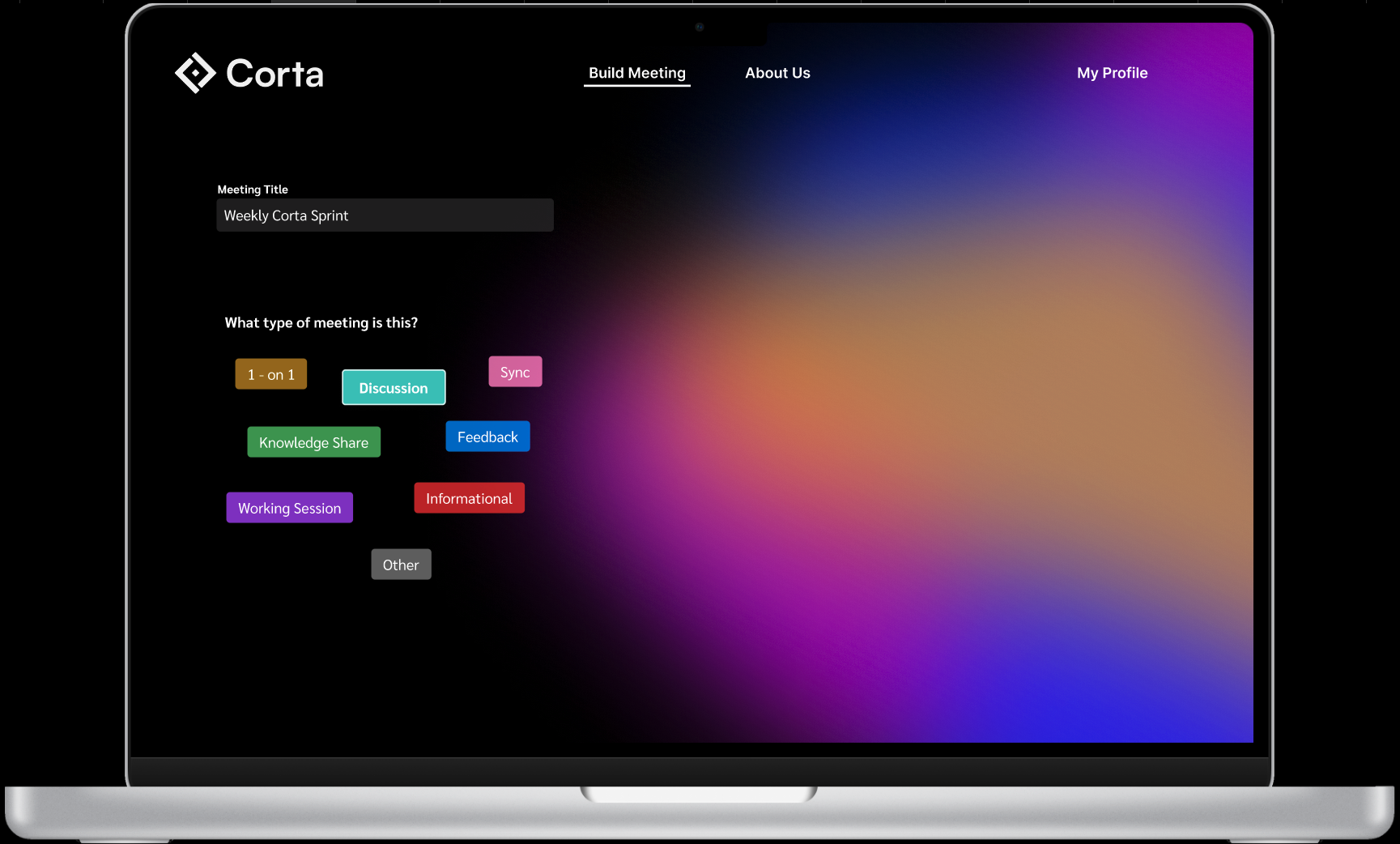
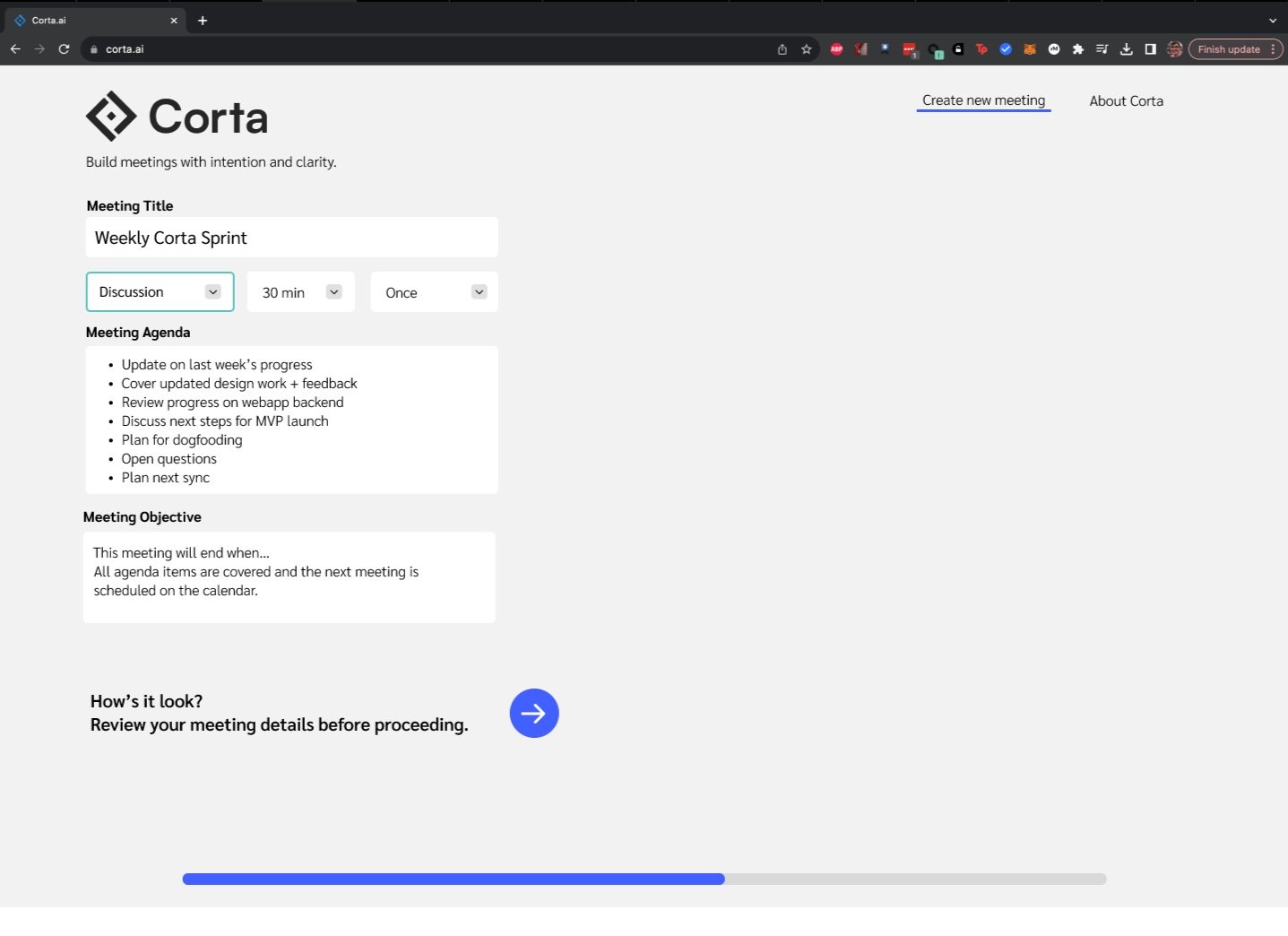
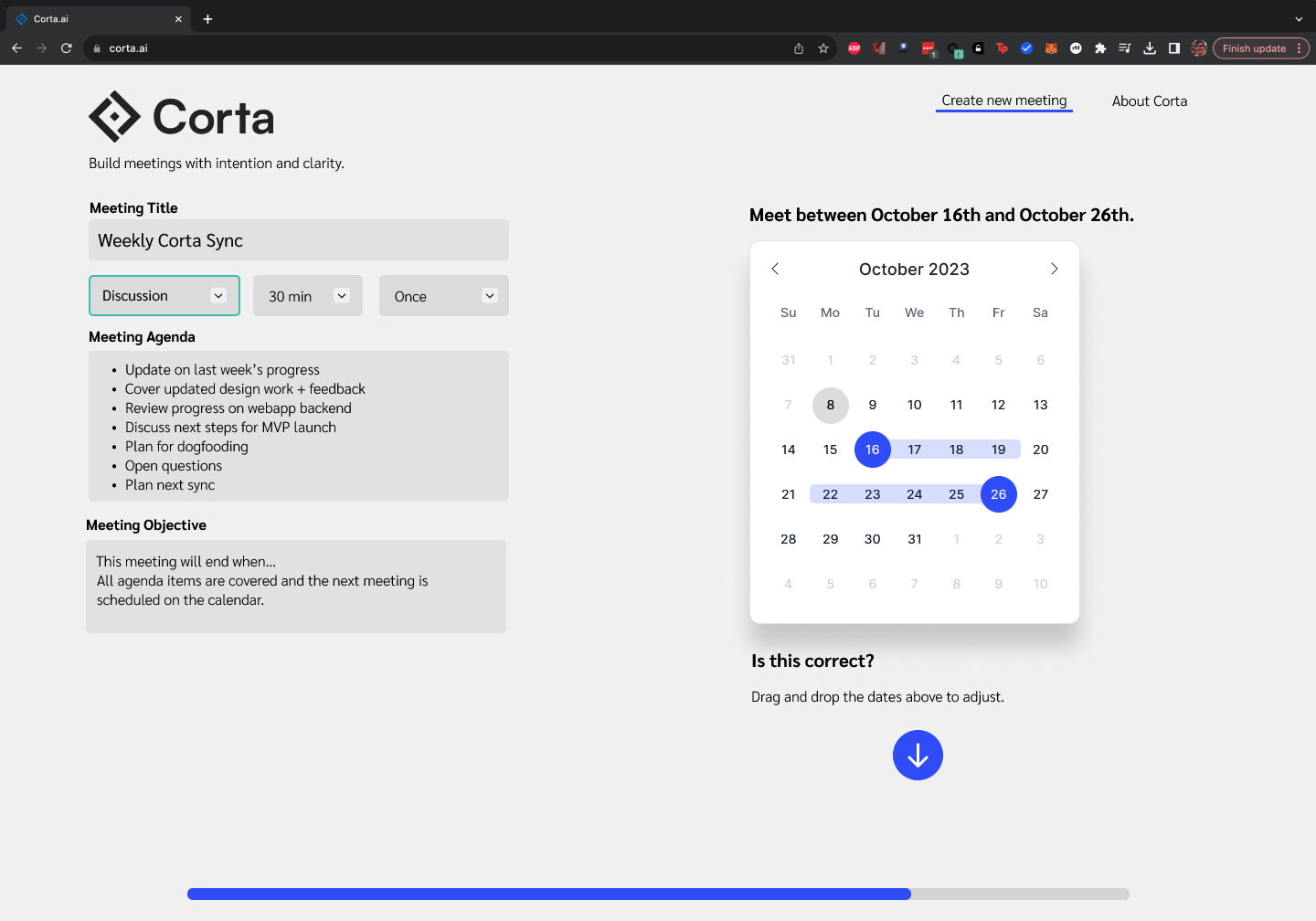
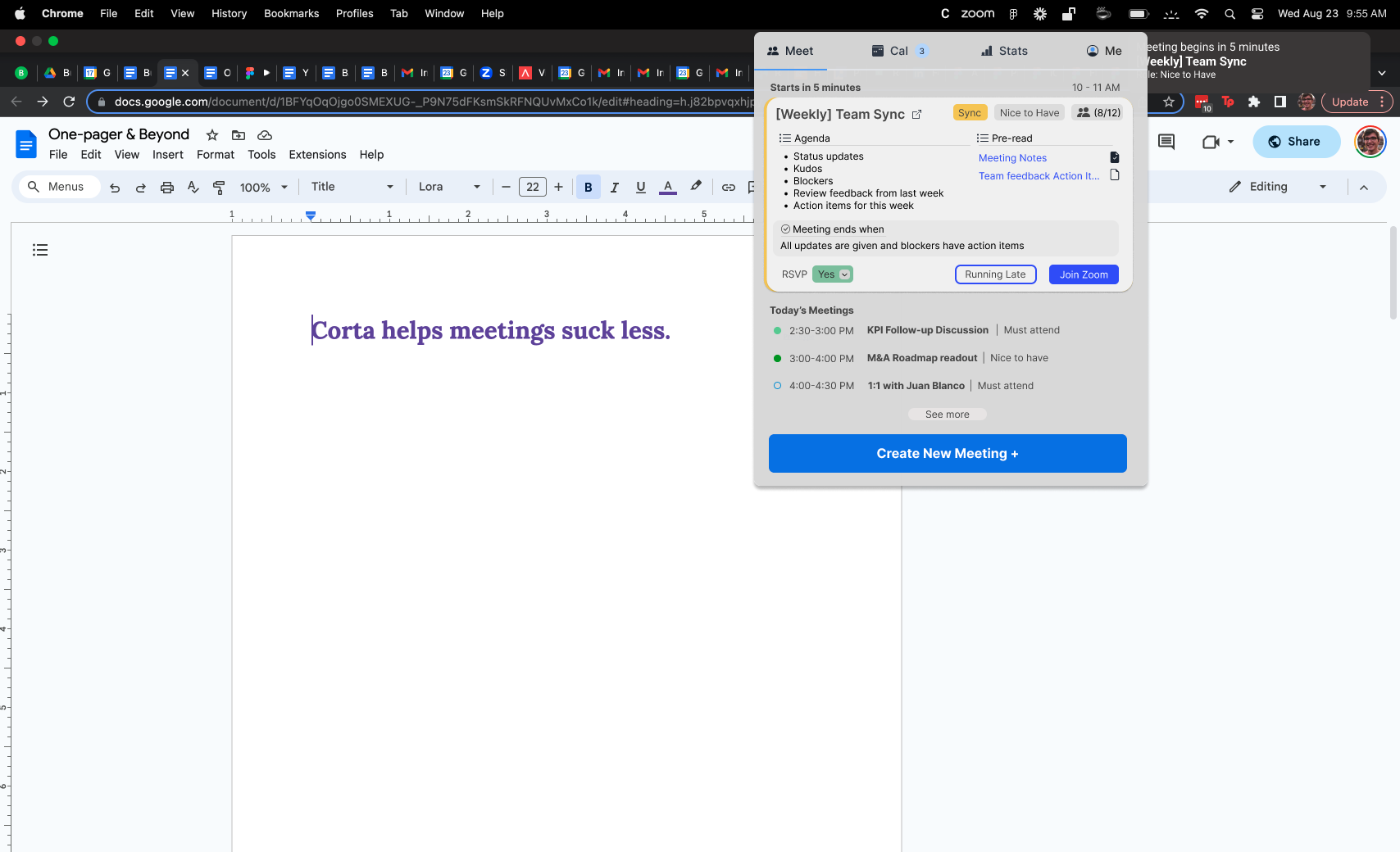
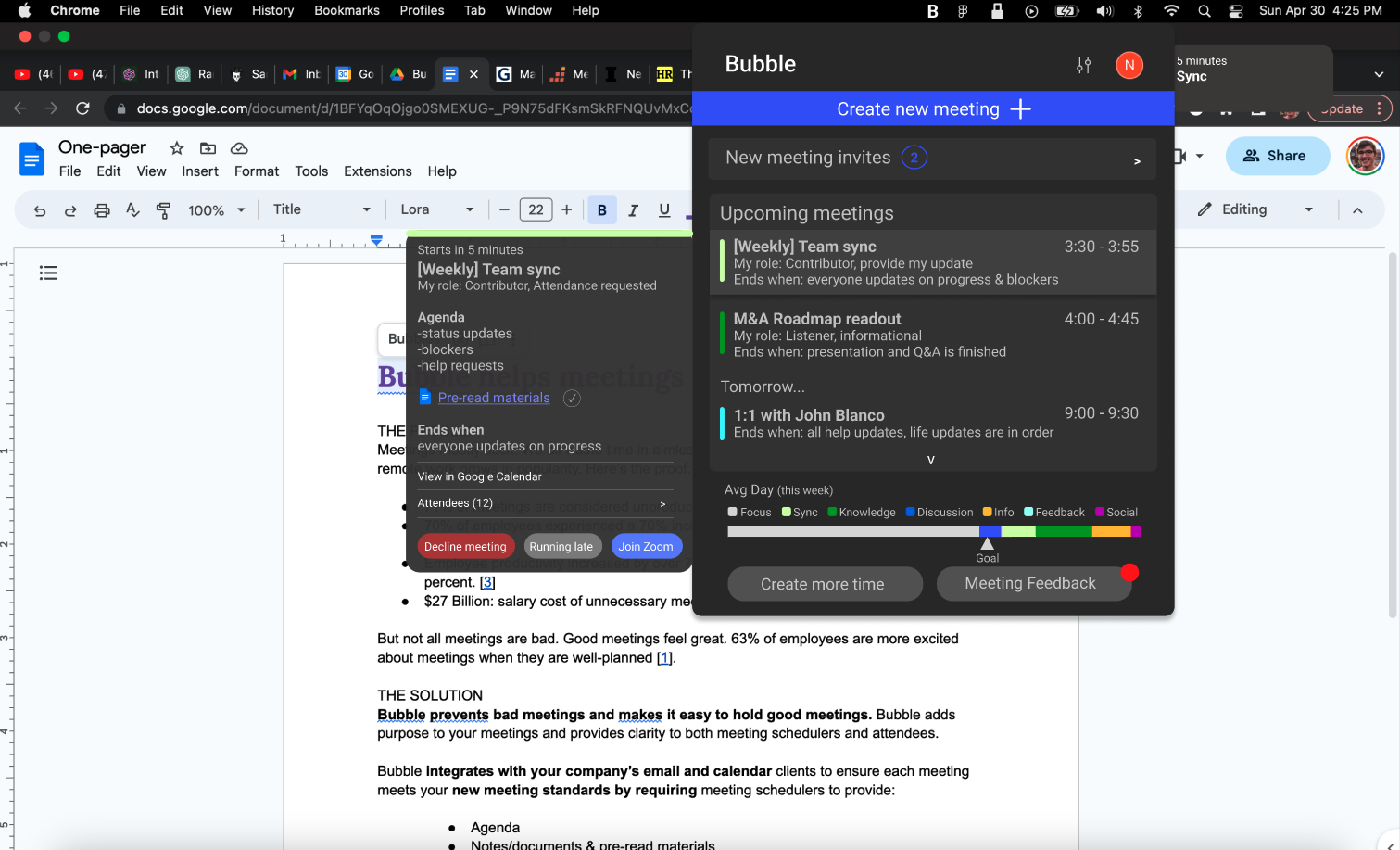
MY ROLE | Co-founder / Product Lead:
Generated the initial idea for the product
Product discovery research: interviewed target users to better define the problem space & uncover opportunities
Prototype & test: prototypes to test product concept, refining and scaling down to an MVP scope
Worked with co-founders to build working MVP based on prototypes
Created one-pager, PRD, pitch deck, MVP scope
Participated in the Buildspace Nights and Weekends creator program
Defined go-to-market strategy
DURATION | ~4 months (part-time weekend side project)
IMPACT |
Accepted into Antler, an investment program for startup founders.
Generated a waitlist of 10+ users and 3 companies interested in joining our Beta program.
DIRECT STAKEHOLDERS | 2 technical co-founders
METHODOLOGIES | Figma prototyping, Moderated interviews, Unmoderated interviews, Concept Evaluation
A quick intro/demo I created for Buildspace.
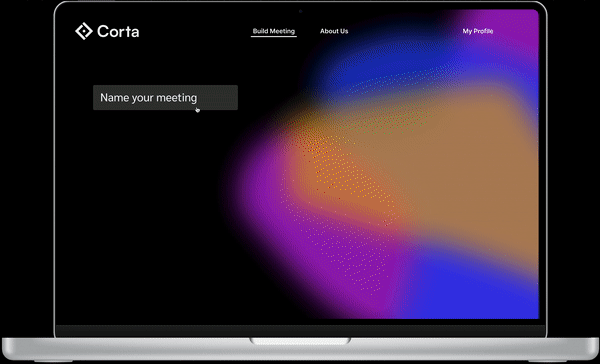
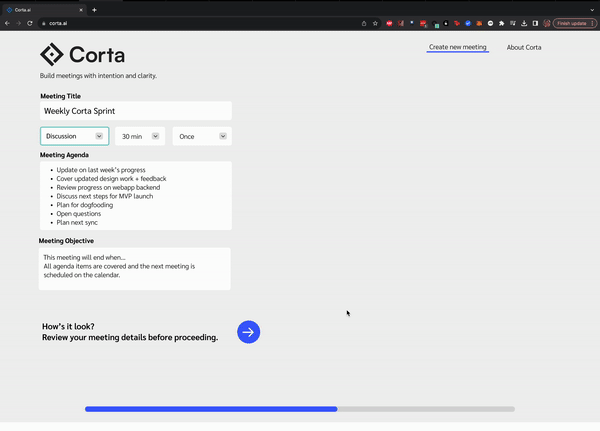
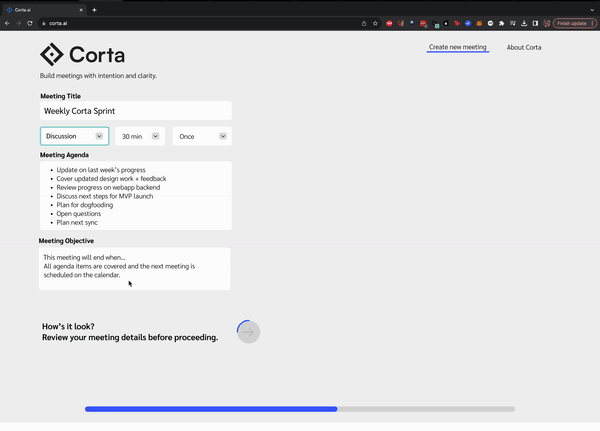
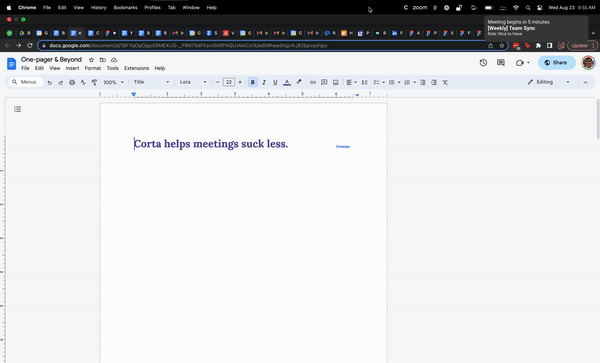
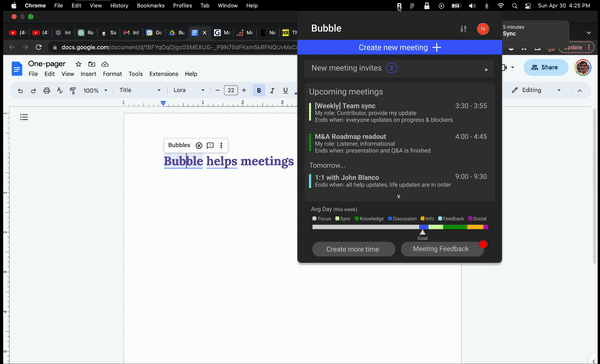
Design prototypes created by myself in Figma. Rapid iterations allowed us to design, evaluate with users, and quickly make improvements, as well as explore different options for our MVP. Please contact me for links to the prototypes.
Background & problem
Meetings mostly suck. What makes a meeting “good” or “bad?” A simple solution might be able to improve meeting culture company-wide, so we set out to build it. Read the one-pager I wrote below:
Desired outcomes
Better meetings
Less meetings
Less time in meetings
methods
semi-structured interviews
What most gets in the way of your productivity at work?
Can you describe meeting culture at your company?
Has your company taken any initiatives to improve meeting culture? If so, what have they done? Has it worked?
From your perspective, what makes a meeting “good” or “bad?”
concept evaluation
After conducting the interview, I would introduce our business idea / product concept to get feedback on the overall idea. I would then send them a link to our prototype and ask them to complete a basic task.
We wrapped up the session with some follow-up questions to get their feedback on not only the overall solution, but also specific design decisions.
key findings
users are hesitant to say “no” to meetings
Often this is due to the meeting scheduler being more senior, or due to the social stigma around turning down a meeting.
“Even if I know it will probably be a waste of time, I still go”
Product decision: Empower users to give meeting feedback before the meeting even occurs & reduce the social stigma around turning down meeting invites
Ask for more details on agenda and/or role
Allow users to anonymously say “this should be an email”
Include an RSVP option: “Message me if you need me to hop on the meeting, but otherwise I will continue working”
meeting setup needs to be easy, but not too easy
When meetings can be created in 10 seconds, they will be. And the quality of that meeting will suffer because of it. We need to add friction to the meeting creation process without making it difficult or frustrating to create a meeting.
Product decision: Reduce the friction (amount of clicks / typing) by using AI/ML/Templates to complete some of the annoying parts of meeting setup; add friction where it matters.
Ask users what type of meeting they want to setup, and provide a template to make agenda creation easier
Use AI/ML to scan a users’ recent contacts & provide suggestions for attendees
Encourage users to slow down and review their meeting details before proceeding to the next step — find the delicate balance between creating quickly and creating intentionally
We are no longer pursuing this idea for a multitude of reasons. Please reach out to me for more information: nathanyoung253@gmail.com